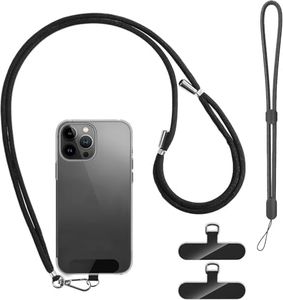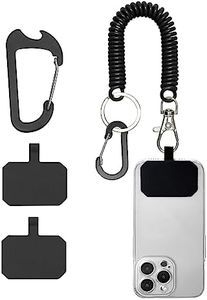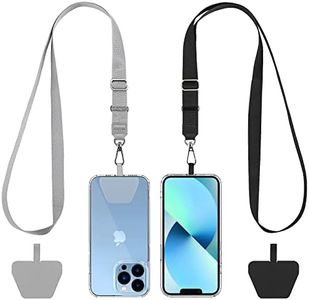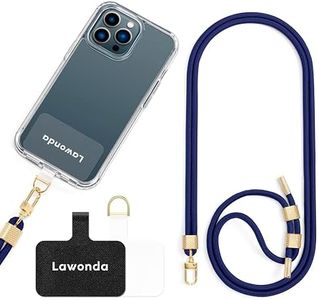We Use CookiesWe use cookies to enhance the security, performance,
functionality and for analytical and promotional activities. By continuing to browse this site you
are agreeing to our privacy policy
10 Best Phone Lanyard
From leading brands and best sellers available on the web.Buying Guide for the Best Phone Lanyard
When choosing a phone lanyard, your main goals are to keep your phone easily accessible and secure from accidental drops. There are many styles and materials to choose from, so it’s helpful to think about where and how you plan to use your lanyard. Some people need something rugged for outdoor activities, while others want a slim and stylish option for daily errands. By focusing on key features like attachment mechanism, material, adjustability, and compatibility, you’ll be able to find a lanyard that suits your lifestyle.Attachment MechanismThe attachment mechanism is the way your phone is secured to the lanyard—common designs include adhesive patches, phone cases with built-in loops, or inserts that go between the phone and its case. This spec is important because it determines both security and convenience. Adhesive patches stick directly to your phone or case and can be slim, but may leave residue or lose strength over time. Insert designs are less permanent and allow for easy removal, but may not fit all case styles. Built-in loops are very secure but require compatible cases. When choosing, consider how often you switch cases, your desire for a permanent or temporary solution, and the level of security you need. Frequent phone-swappers may prefer inserts, while those who use one case for a long time might like adhesive or built-in options.
Strap MaterialStrap material refers to what the lanyard is made of—typically nylon, polyester, leather, silicone, or a blend of fabrics. This matters because it affects comfort, durability, and appearance. Nylon and polyester are lightweight and durable, making them great for active use. Leather offers a premium feel and is comfortable, but less suited for heavy sweating or water. Silicone is soft and flexible, ideal for comfort but may collect lint. Fabrics blends can offer unique looks and comfort. Choose based on how the lanyard will feel against your skin, whether you want something stylish or practical, and how rugged or fashionable you’d like it to be.
Length and AdjustabilityLength and adjustability describe how long the lanyard is and whether its length can be changed. This spec is crucial for comfort and usability: a longer lanyard allows you to wear your phone crossbody or around your neck, while a shorter one is better for wrist use. Adjustable lanyards are versatile and can suit multiple uses or users, while fixed-length options are simpler but less flexible. Think about how you want to carry your phone—around your neck for events, crossbody for sightseeing, or on your wrist for errands—and pick the option that feels most natural and comfortable for your needs.
Breakaway Safety FeatureA breakaway safety feature means the lanyard will release under pressure to prevent choking or injury if it gets caught on something. This is especially important for lanyards intended for children, crowded environments, or active use. Some lanyards have a clasp that pops open when pulled hard, while others do not. If you’re choosing a lanyard for sports, children, or workplaces, prioritize a breakaway style for safety. For everyday gentle use, this may be less essential, but it's always good to consider safety.
CompatibilityCompatibility refers to whether the lanyard will work with your specific phone model and case. Some lanyards are universal and work with most cases, while others require a specific design or thickness of case to function properly. Check if the attachment method will fit your phone and the case you use, especially if you have a bulky case or unique phone shape. If you change cases often or use large cases, look for designs labeled as universally compatible or those using adjustable inserts.
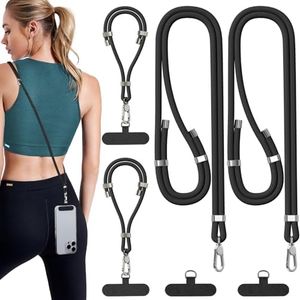
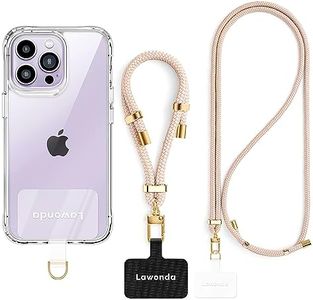


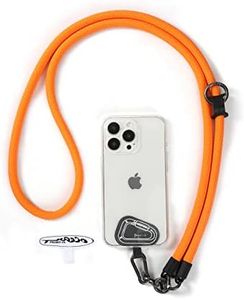
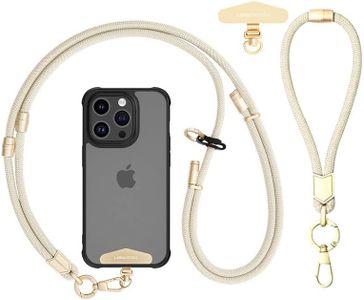
![Case-Mate - IP68 Waterproof Phone Pouch/Case [Touchscreen Compatible] - Floating Waterproof Phone Case w/Crossbody Lanyard - Grey/Black](https://images-proxy.bestreviews.guide/OZoiVzqntprDaCbpb-9sho4y5W4=/0x300/https://m.media-amazon.com/images/I/41yIrynvYAL._AC_CX679_.jpg)
